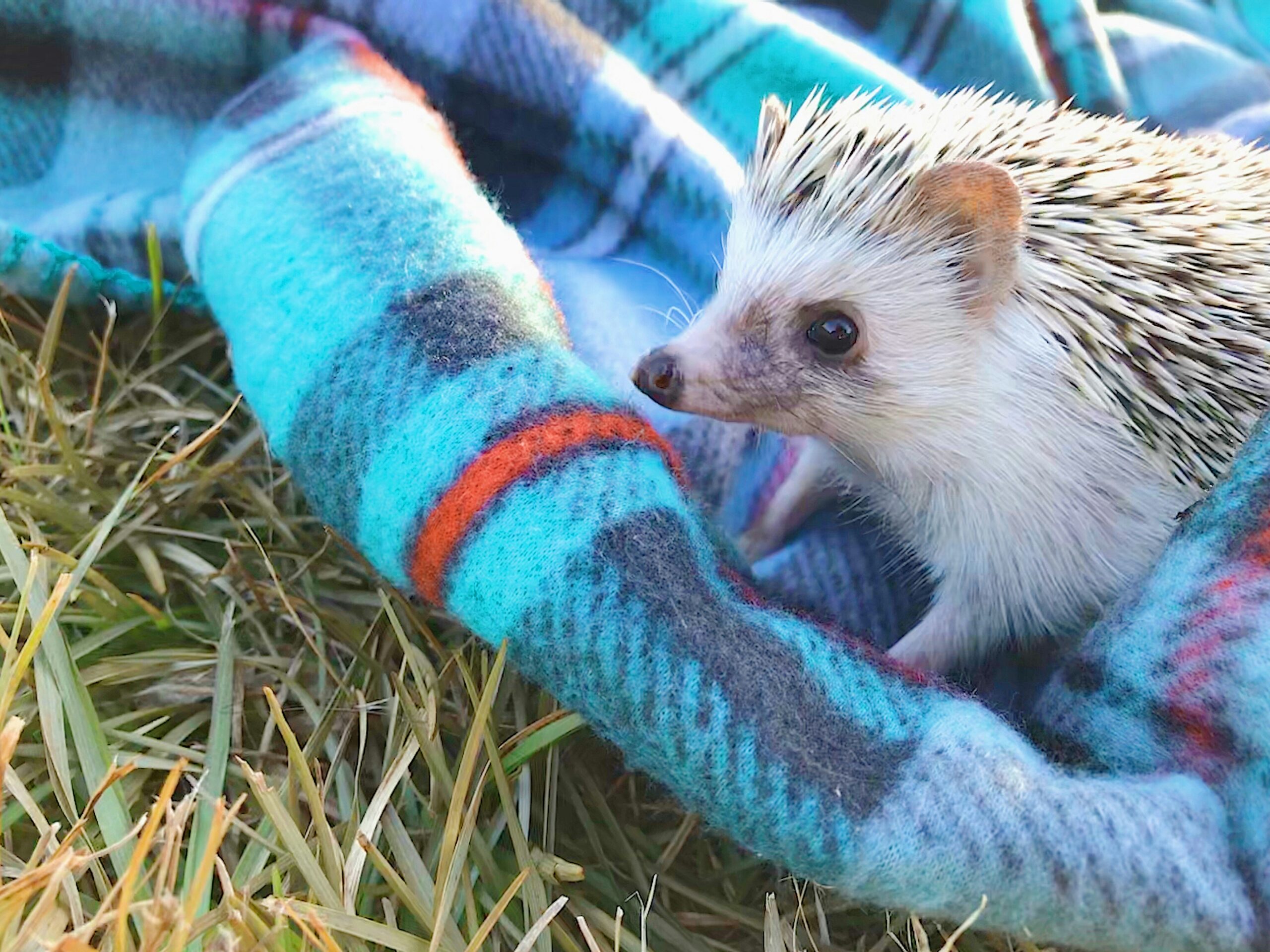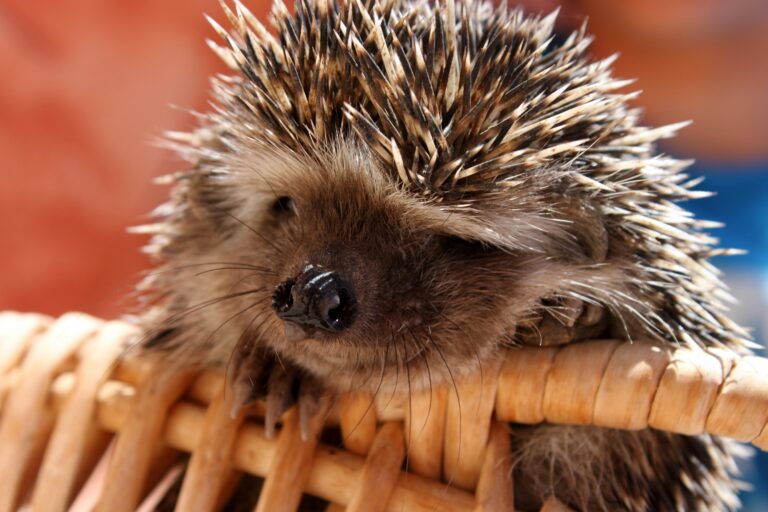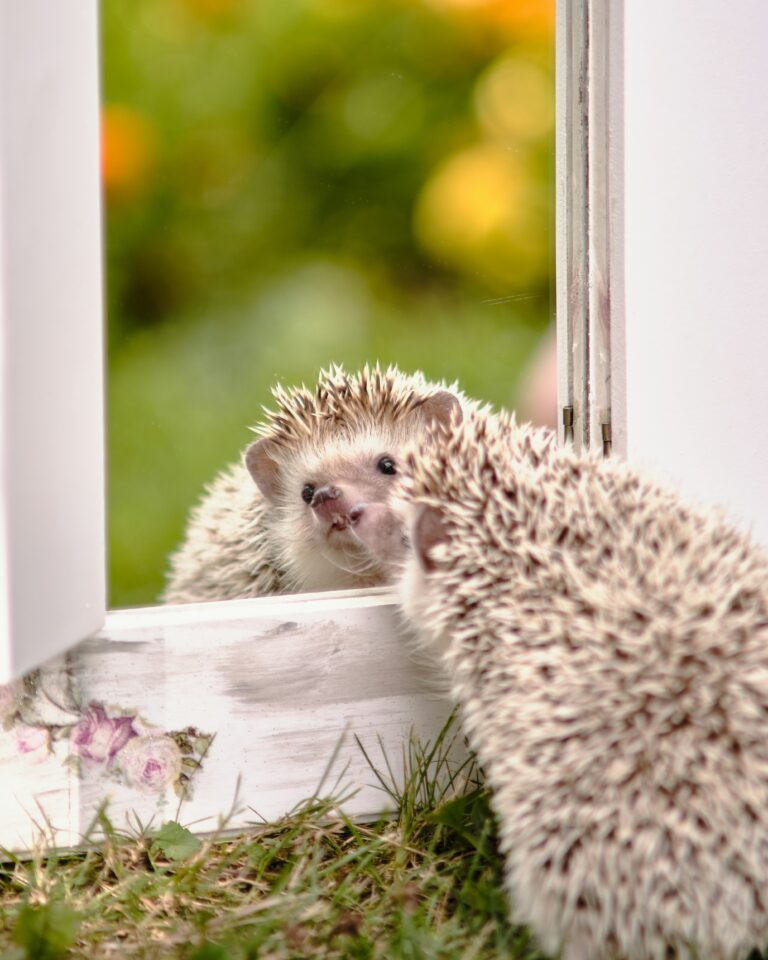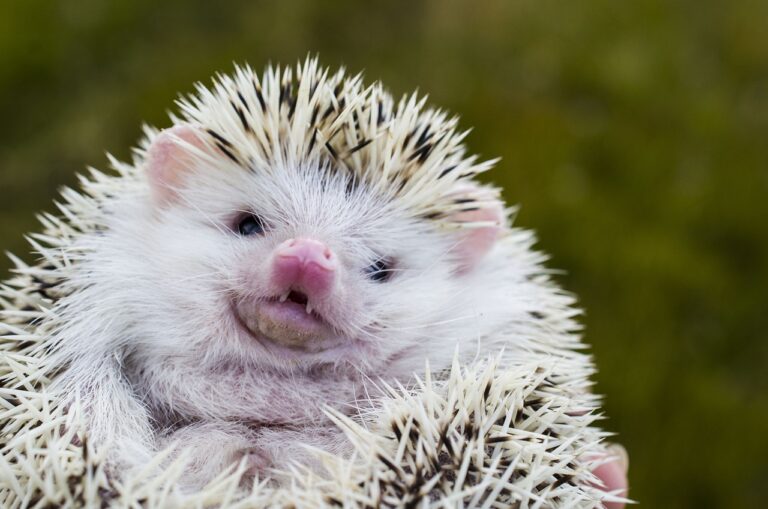Common Hedgehog Myths

Hedgehogs, with their endearing appearance and intriguing behaviors, have captured the fascination of humans for centuries!
Yet, amidst the admiration lies a web of myths and misconceptions that often obscure the true nature of these spiky little creatures.
In this post, we’ll embark on a journey to unravel the quills and dispel the myths surrounding hedgehogs, shedding light on the realities behind the myths.
Myth #1: Hedgehogs can shoot their quills
One of the most persistent myths about hedgehogs is that they can shoot their quills as a defense mechanism, much like porcupines. However, this notion is purely fictional. Hedgehogs possess an impressive array of sharp spines, but these are not projectiles.
Instead, when threatened, hedgehogs will curl into a tight ball, tucking their vulnerable face and belly beneath a fortress of quills. Any predator foolish enough to attempt an attack will encounter a formidable barrier of spines, deterring further aggression.
While this defensive strategy is effective, hedgehogs rely on curling into a ball rather than launching their quills like projectiles.
Myth #2: Hedgehogs are aggressive
Despite their prickly exterior, hedgehogs are not inherently aggressive animals. In fact, they are typically shy and reserved creatures that prefer to avoid confrontation.
When approached by a potential threat, such as a human or another animal, hedgehogs are more likely to retreat or curl into a defensive ball than to lash out aggressively. However, like any animal, hedgehogs may exhibit defensive behaviors if they feel cornered or threatened.
It’s essential to approach hedgehogs with gentleness and respect, allowing them to acclimate to your presence at their own pace.
Myth #3: Hedgehogs are rodents
While hedgehogs may bear a superficial resemblance to rodents, they belong to a distinct taxonomic group known as Erinaceidae.
Unlike rodents, which have continuously growing incisors and belong to the order Rodentia, hedgehogs have a different dental structure and belong to the order Eulipotyphla, along with shrews and moles.
Furthermore, hedgehogs are characterized by their unique spines, which are composed of keratin, the same protein found in human hair and nails. These spines provide hedgehogs with both protection and insulation, serving as a hallmark feature of their identity.
Myth #4: Hedgehogs are low-maintenance pets
While hedgehogs have gained popularity as exotic pets, the notion that they are low-maintenance creatures is a common misconception.
Hedgehogs have specific dietary, environmental, and social needs that must be met to ensure their health and well-being. Proper care involves providing a suitable habitat with ample space for exercise and exploration, a balanced diet consisting of high-quality commercial hedgehog mixed with high quality, dry cat food food supplemented with insects and occasional treats.
Additionally, hedgehogs require mental stimulation and social interaction to thrive, making daily handling and enrichment activities essential aspects of their care. As such, prospective hedgehog owners should carefully consider the responsibilities involved before bringing one into their home.
Myth #5: Hedgehogs carry diseases that are harmful to humans
While it’s true that hedgehogs can carry certain diseases, such as salmonella, the risk of transmission to humans can be minimized through proper hygiene and handling practices.
Washing your hands thoroughly after handling a hedgehog or cleaning its habitat can help reduce the risk of infection. Additionally, providing a clean living environment and regularly monitoring your hedgehog’s health can further mitigate the risk of disease transmission.
With proper care and precautions, the likelihood of contracting an illness from a pet hedgehog is relatively low, allowing owners to enjoy the companionship of these delightful creatures without undue concern.
Conclusion
Hedgehogs are fascinating creatures that have captured the imagination of humans for generations!
However, amidst the admiration lies a tapestry of myths and misconceptions that often obscure the true nature of these spiky little animals.
By debunking these myths and shedding light on the realities behind them, we can gain a deeper understanding and appreciation for hedgehogs and the unique role they play in the natural world.
Whether as beloved pets or enchanting wild creatures, hedgehogs continue to inspire wonder and fascination, inviting us to unravel the quills and discover the truth beneath.






